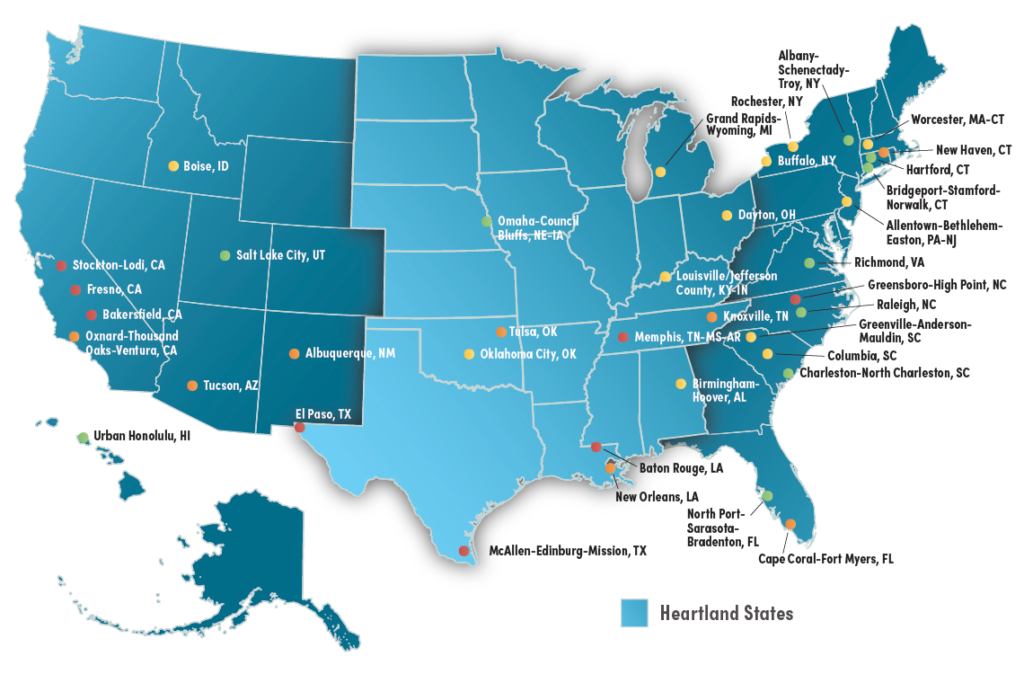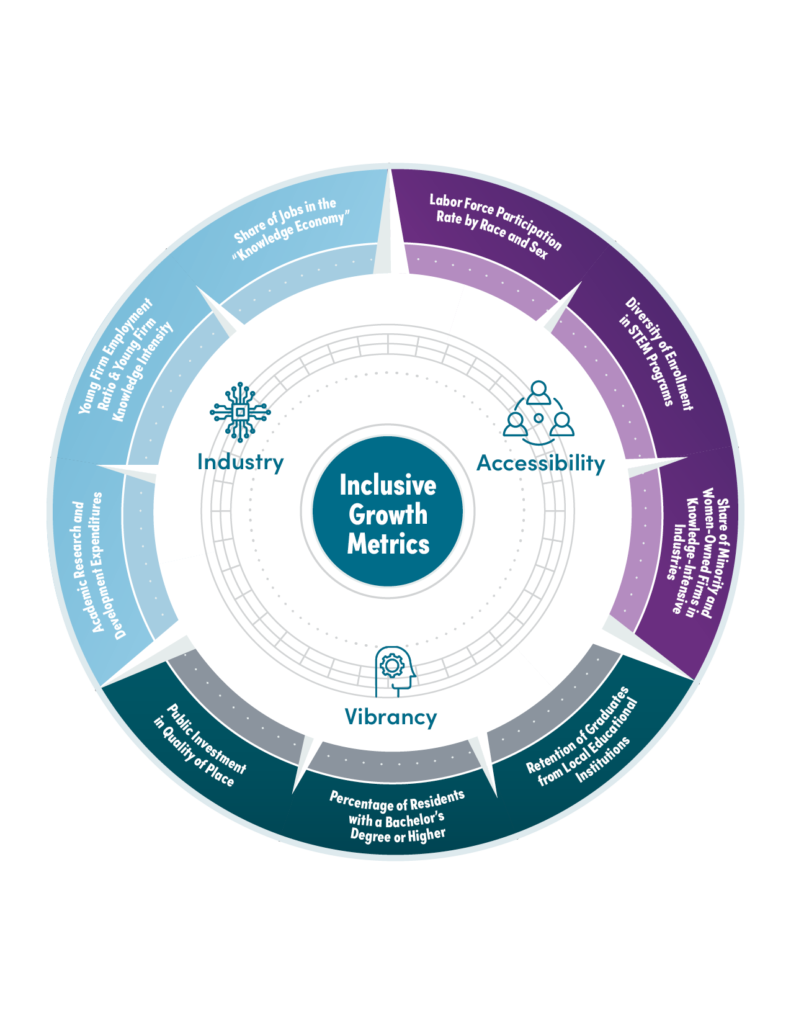
Photo: Hanohiki | Dreamstime.com
How the next wave of tech hubs can be more inclusive
29 March 2022
by Sarah Wray
A new tool aims to help the next generation of tech hubs avoid the common pitfalls associated with rapid change.
In a bid to diversify their economies away from legacy industries and to boost resilience, more cities are looking to put themselves on the innovation map to attract talent and high-growth companies. However, cities such as Seattle, San Francisco, and Austin have shown there are also challenges related to a booming tech economy in terms of equity and housing affordability.
The Economy Forward Framework has been developed by Tulsa Innovation Labs (TIL) — an economic development organisation led by the George Kaiser Family Foundation — in partnership with non-profit Heartland Forward and the Aspen Institute think tank. It particularly focuses on mid-size ‘heartland’ cities but could be adapted for other contexts, with similar trends being seen in countries outside the US.
“The urgency of repositioning local economies for the 21st century is particularly stark in heartland cities because of increasing risk of automation,” said Ross DeVol, President and CEO of Heartland Forward.

Defining success
TIL was launched in 2020 to develop a city-wide strategy with public and private partners to position Tulsa as a tech hub and leader in the future of work. Nicholas Lalla, Co-Founder & Managing Director at Tulsa Innovation Labs, realised there was no effective way to measure the growth of Tulsa’s knowledge economy or how inclusive it was, so the organisation and its partners set about defining a framework of success metrics.

“We’ve been prioritising inclusive growth,” Lalla told Cities Today. “But truth be told we didn’t really know what that meant or measure our progress at a macro level.
“We wanted to unpack it and define inclusive growth in terms of specific metrics which Tulsa and other cities could use to develop an action plan to make progress.”
Traditional metrics such as jobs created or average wage can often exclude more nuanced analyses that address inclusion, diversity, and resilience of jobs.
The Economy Forward Framework identifies nine metrics across three categories to act as key indicators for inclusive growth.
These include the share of jobs in the knowledge economy; the share of minority and women-owned firms; the percentage of workers employed at start-ups and the percentage of those employees that have a bachelor’s degree or higher; and public investment in quality of place.

“We know that if Tulsa is looking to get on a similar growth trajectory as other emerging tech hubs, that takes a generation,” Lalla said. “We wanted to really focus on what cities can be doing now in the short term to reset and refocus their economies. So we looked at metrics that were sensitive enough to show changes over a five-year timeframe, which we think can allow cities to determine which interventions are working.”
Cities ranked
The team applied a subset of the metrics to 38 mid-sized American cities, including Tulsa, to create a ranking based on their inclusive economic growth trajectory.
Salt Lake City, UT, topped the list overall and leads the ‘forward ready’ cities, followed by Albany-Schenectady-Troy, NY, and Hartford-West Hartford-East Hartford, CT. Forward-ready cities are classified as generally having stable and consistently growing knowledge economies, and to be moving in the right direction.
Among the ‘nearly-ready’ cities are Dayton, OH, Buffalo-Cheektowaga-Niagara Falls, NY, and Oklahoma City, OK. This means the cities are on positive trajectories with several strong indicators, but further maturity is needed.
New Haven, CT, New Orleans-Metairie, LA, and Oxnard-Thousand Oaks-Ventura, CA, top the list of ‘opportunity cities’, which have local assets or strengths but need sustained investment to grow inclusive and recognised tech economies.
Cities ranked as particularly ‘at risk’ of struggling in the new economy include Baton Rouge, LA, Greensboro-High Point, NC, and El Paso, TX. Stockton-Lodi, CA, is ranked lowest.
Tulsa ranks joint 27th overall and is listed as an opportunity city.

Lalla said there were “some surprises” in the rankings of certain cities.
On Tulsa’s position, he said: “TIL is in the trenches every day and we knew some of the challenges that the city was facing so I don’t think Tulsa’s positioning was a surprise to us, though it may have disappointed some of our local stakeholders. But this also shed some hard truths about Tulsa’s economy.”
“We need to be really honest with ourselves,” he commented. “We need to examine the data very closely and identify what’s holding us back and what we can do to reset our economy. And that requires the data, the analysis, the metrics, and the goals.”
Finding a niche
Using the framework, TIL has created a five-year plan for inclusive growth, including increasing the share of knowledge economy jobs to 30 percent of all jobs in Tulsa by 2026, ensuring that ten percent of academic R&D expenditures in Oklahoma are in Tulsa by the same date, and doubling the city’s share of minority-owned knowledge economy firms within five years.
Tulsa’s economic development strategy is focused on capitalising on the city’s ‘tech niches’: virtual health, energy tech, advanced aerial mobility, and cybersecurity.
Lalla said: “Our key message to mid-sized cities is build on your strengths and really take close stock of the assets that you have locally. Identify those niche areas and invest in those key institutions across the innovation flywheel.
“Chasing corporate headquarters and shiny objects isn’t the way to go. [Cities] really need to focus on growing from the inside out.”
Image: | Dreamstime.com









